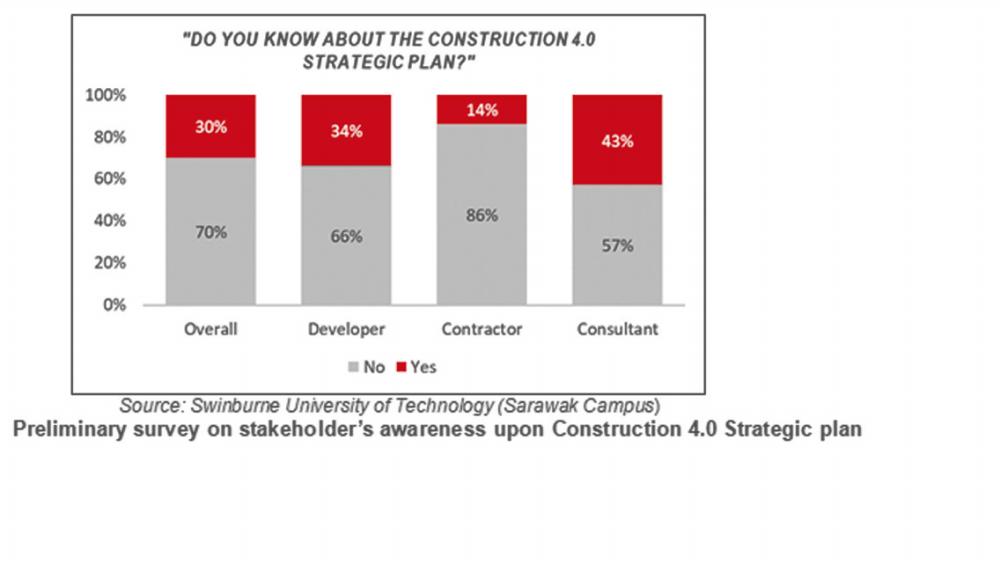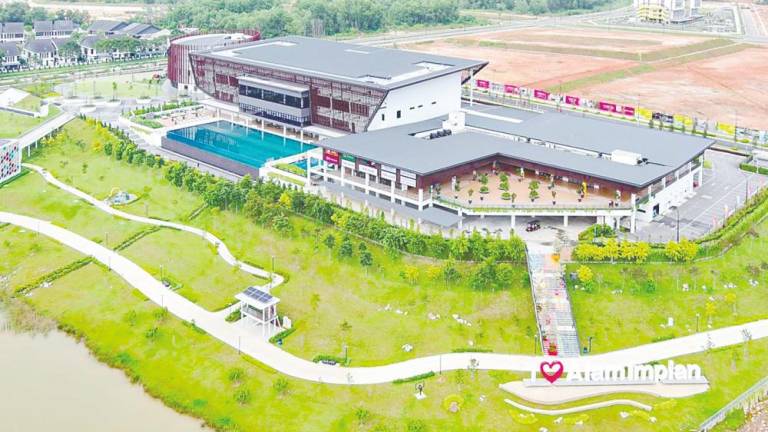THE emergence of the Fourth Industrial Revolution (IR4.0) has created a paradigm shift that shaped industrial sectors towards digital transformation. To be aligned with this transformation, the Construction 4.0 Strategic Plan (2021–2025) was formulated and to be functioned as a roadmap for the Malaysian construction industry to embrace IR4.0 in ways that would transform its productivity and competitiveness. The plan is divided into four thrusts, covering 12 emerging technologies and its implementation plan within the short, medium, and the long term.
Though the plan has been released since 2020, its awareness is rather low among industry players. A preliminary survey conducted by Swinburne University of Technology (Sarawak Campus) at Malaysia’s southern region in July 2022 found that as high as 70% of the industry players – developers (66%), contractors (86%), consultants (57%) – are not aware of the existence of the plan (see chart). While some respondents did hear about the plan, a majority of them express that they get lost in the semantics of defining the plan vision, mission and values; especially on how they are to be included and facilitated to embrace technology transformation in their organisations.
To the developers (referring to the survey respondents), the plan should not just create ideas and inform visions of how one can imagine the future of construction industry. It should be a more tactical plan for “what to do” and “how to get there”; especially on how organisations with different scale can fit in to the plan, but are still being able to respond to the changing marketplace on a daily basis. Also, the plan must be put in the right mind-set, whereby business transformation should not be done just for the sake of implementing technology, but to be framed as a high-level plan that can drive greater business value and customers’ satisfaction through digital transformation initiatives.
Meanwhile, the contractors (referring to the survey respondents) opined that the plan missteps in scoping the time and resources that are needed to deliver a successful outcome. Pragmatism is a key part of any successful plan; and failure to account for business as usual could influence the buy-in from stakeholders, thereby affecting the effectiveness of its implementation. Policy makers should not be easily caught up in the excitement of the “new ideology” and expecting that changes can be accomplished overnight, while forget to allow enough time for stakeholders to manage and adapt to the transformation.
For example, the size, scope, and magnitude of digital transformation can be enormous. The existing technology platforms and applications among stakeholders may not be using the latest architecture and tools. As such, stakeholders’ alignment, progress, costs, timeline, risks, and status have to be understood and communicated well, in order to avoid the so-called “technology transformation” ends up creating more technical “debt”.
From the consultants’/professionals’ point of view (referring to the survey respondents), all organisations have a limited capacity for change, especially under the current economic environment where most of them are under constant pressure to cut cost and save money. Risks and challenges will have to be faced before true change begins. So, instead of “digitalisation for the sake of digitalisation”, the plan should not be scoped at just technology-driven change, but to harness and leverage on the existing technologies for achieving a continual improvement “program”.
There are many problems and issues in the industry, which can be solved by simply “changing the way of doing things”, without even involves a drastic change through technology transformation. “Being practical” and “meeting the industry players’ needs” are the key towards a higher level of efficiency and a modern construction industry. Most importantly, all transformation needs attention to details. There is no one-size-fits-all approach, as digital transformation is also unique to each organisation. On this basis, an “action plan” that could really take into account the marketplace reality, facts, and assumptions; as well as incentives to encourage any level of technology transformation, have to be put in place; alongside with the long-term and consistent commitments or supports from the government.
This article is contributed by MKH Bhd manager of product research and development Dr Foo Chee Hung and Swinburne University of Technology Sarawak Campus Faculty of Engineering, Computing & Science course director & senior lecturer Dr Chai Chang Saar.














